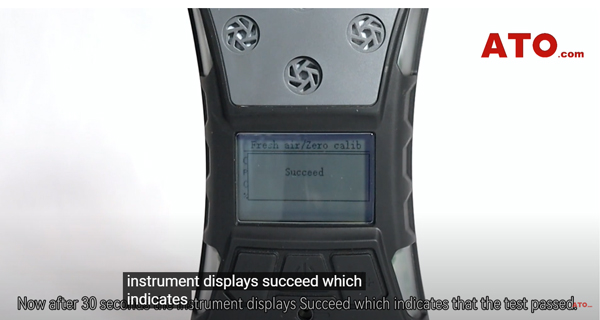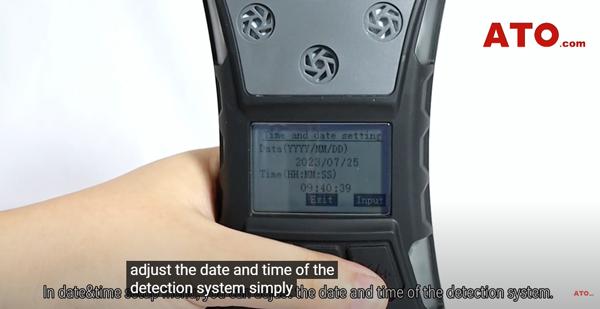How to Set up Portable Multi Gas Detector?
Welcome to our blog, where we'll explore the user manual and calibration process for ATO's explosion-proof portable gas detector series. These devices are designed with user-friendliness in mind, featuring only three buttons: the on/off button, N/- button, and Y/+ button. Despite the simplicity of its interface, this gas detector offers a wide range of capabilities. In this guide, we'll walk you through manual operation and calibration procedures, ensuring that you can maximize the utility of this essential tool.
User-Friendly Interface
ATO's explosion-proof portable gas detector boasts a streamlined interface, featuring just three buttons: the on/off button, the N/- button, and the Y/+ button. This simplicity makes it accessible to users of all levels of expertise. To access the menu, press and hold the N button, and you'll be prompted to enter a password. The default password is 1234, making the process straightforward.
Calibration
The primary function of this menu is calibration. Here, you can perform instrument pump tests, including fresh air or zero calibration and span calibration. Zero calibration is easily initiated by pressing the Y button. You can calibrate up to four sensors on this multi-gas detector, with each sensor taking only 30 seconds to complete the process. You can select the specific gas sensor you wish to test by pressing the N button, initiating a 30-second countdown. Should you need to stop the process, simply press the Y button, as indicated by the icon. Successful completion is displayed as "Succeed," indicating proper instrument functionality. It's important to remember that zero calibration should always be performed in known fresh air conditions to ensure measurement accuracy.

Span Calibration
Span calibration, on the other hand, demands strict conditions and the use of standard gas under professional guidance. To activate this function, users must input a password, ensuring that it is not triggered accidentally. You can also adjust the calibration interval, with a recommended interval of 180 days. For the sake of safety, it's essential to calibrate the device regularly. The frequency varies for different sensors, with toxic and combustible gas sensors requiring calibration at least once every six months, while the infrared sensor should be calibrated at least once a year. Moreover, it's advisable to test or calibrate the detector after an alarm event.
Alarm Settings
Under alarm settings, there are three sub-menus. Alarm Limit allows you to set high, low, STEL (Short-Term Exposure Limit), and TWA (Time-Weighted Average) alarms for four gases. Note that STEL and TWA are available only for toxic or hazardous gases. When configuring these alarms, consider the measurement units and confirm the changes by pressing OK to save your adjustments.
Alarm Mode
The alarm mode menu offers three options, allowing you to select visual flashing LED lights, a buzzer, or a vibrating alarm based on your preferences.
Alarm Latched
The alarm latched sub-menu presents choices for automatic alert cancellation and reset. You can select from different latching modes, such as latching at low alarms, high alarms, or both high and low alarms. Each mode serves specific needs, and your choice is easily confirmed with the Y button.
Man Down Alarm
This essential function is a life-saver in hazardous conditions. When activated, the device emits a piercing siren when it detects an operator's extended motionlessness or a potential fall due to gas exposure. The function's parameters include motionless time, sensitivity, and warning duration.
Comfort Beep
Comfort beep serves as a safety reminder, periodically emitting a long beeping sound to keep the user alert. The time intervals can be adjusted according to your preferences.
Data Logging
The next set of functions focuses on data logging. By activating this feature, you can store various data types, including real-time data, maximum, minimum, high and low alarm values, and all alarm values. Data can be viewed on the device or transferred to a computer via a USB connection.
Monitor Setup
The monitor setup menu covers a wide array of settings, including pump control, measurement units, date and time setup, language selection, display preferences, and privacy settings.

In conclusion, the ATO explosion-proof portable gas detector offers a wealth of features and customization options to meet your specific needs in hazardous environments. Its user-friendly interface and versatile capabilities make it an essential tool for safety and compliance. With regular calibration and an understanding of its various functions, you can confidently navigate the challenges of gas detection in the field.
Here's a detailed video of the operation. ATO provides various types of gas detectors, welcome to purchase.

